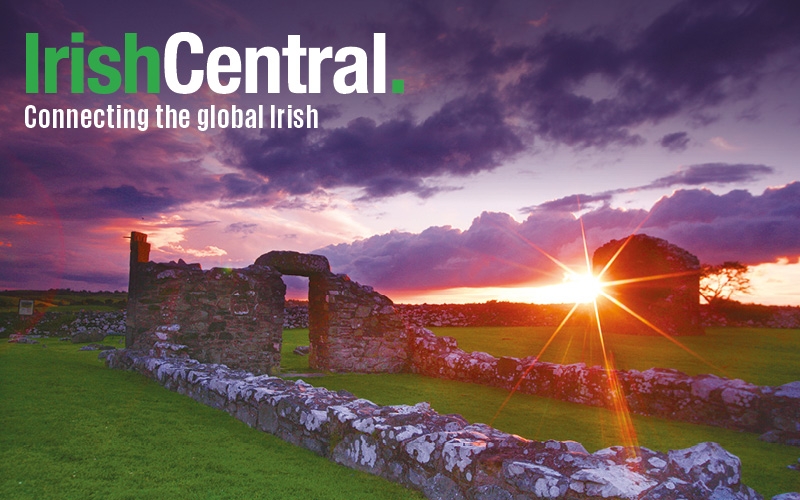The head of Trinity College Dublin has been told he ‘botched it up’ with his controversial plans to change the university’s historic emblem and image.
TCD Provost Patrick Prendergast was heavily criticized for the plans to rebrand the college at a meeting in the 400 year old institution.
Prendergast was criticized from the floor by a number of speakers over plans which include replacing the college’s traditional banner with a new emblem designed to move away from cheap brands like Ryanair and Ikea.
The Irish Times reports that geneticist Prof David McConnell drew loud applause when he called on the provost to reverse the current plans.
Prof McConnell said: “The current crest that we have has mystery; it has gravitas, it has history, it has meaning. When people look at it they know it’s old.
“That (new design) is not old and it’s our age more than almost anything else that distinguishes us from every other university on the planet.”
Professor McConnell also said: “We are losing very much more than we will gain by moving away from the use of TCD and adopting Trinity College, the University of Dublin” in official communications.
“The college’s research output is associated with the name TCD and to change the name would greatly damage its standing.
“You are losing the central identity that has carried us since 1592. It’s throwing away the family jewels. I would appeal to you, provost, to rethink this.”
The report adds that TCD pro-chancellor Prof John Scattergood told the provost he had ‘simply botched it’ by trying to combine both university and college shields in the new design.
The proposed logo retains the lion, harp and castle while converting the closed Bible into an open book.
Prof John Scattergood warned: “What you have succeeded in doing is draining meaning out of those symbols.
“The college crest has a religious agenda and highlights historical links going back to the Tudors. By creating a hybrid logo with anaemic” blue and white, the two shields have been wrecked.”
Economist Prof Brian Lucey told the meeting that while consistency in branding was welcome, the logo looked ‘cheap, bland and insipid’.
In response to the criticism, Dr Prendergast did propose to evaluate the views of those present and answer their concerns.
“There is big complacency here that people know about Trinity College Dublin around the world. This is not the case so don’t be self-satisfied about this.
“Trinity has always had University of Dublin attached to its name. However when you type it into Google, you don’t get Trinity College. UCD shows up in the first reference instead.
“We need to decide here whether we want to reclaim ‘University of Dublin’ or let it slip.”
The Irish Times reports that when asked about the logo, he said he understood his predecessor John Pentland Mahaffy, in the early 1900s, had ‘opened the clasps’ on the bible ‘to show knowledge should be accessed’.
He said: “Recent research linked the symbol to the word libris not biblical so we are not sure if it was a bible.”
The paper reports that he also assured Irish-language speakers that the ‘default’ brand for use domestically would be the bilingual one while the English version would be used overseas.
www.irishtimes.com/news/education/tcd-provost-defends-rebranding-as-staff-turn-on-insipid-logo-1.1751011
The head of Trinity College Dublin has been told he ‘botched it up’ with his controversial plans to change the university’s historic emblem and image.
TCD Provost Patrick Prendergast was heavily criticized for the plans to rebrand the college at a meeting in the 400 year old institution.
Prendergast was criticized from the floor by a number of speakers over plans which include replacing the college’s traditional banner with a new emblem designed to move away from cheap brands like Ryanair and Ikea.
The Irish Times reports that geneticist Prof David McConnell drew loud applause when he called on the provost to reverse the current plans.
Prof McConnell said: “The current crest that we have has mystery; it has gravitas, it has history, it has meaning. When people look at it they know it’s old.
“That (new design) is not old and it’s our age more than almost anything else that distinguishes us from every other university on the planet.”
Professor McConnell also said: “We are losing very much more than we will gain by moving away from the use of TCD and adopting Trinity College, the University of Dublin” in official communications.
“The college’s research output is associated with the name TCD and to change the name would greatly damage its standing.
“You are losing the central identity that has carried us since 1592. It’s throwing away the family jewels. I would appeal to you, provost, to rethink this.”
The report adds that TCD pro-chancellor Prof John Scattergood told the provost he had ‘simply botched it’ by trying to combine both university and college shields in the new design.
The proposed logo retains the lion, harp and castle while converting the closed Bible into an open book.
Prof John Scattergood warned: “What you have succeeded in doing is draining meaning out of those symbols.
“The college crest has a religious agenda and highlights historical links going back to the Tudors. By creating a hybrid logo with anaemic” blue and white, the two shields have been wrecked.”
Economist Prof Brian Lucey told the meeting that while consistency in branding was welcome, the logo looked ‘cheap, bland and insipid’.
In response to the criticism, Dr Prendergast did propose to evaluate the views of those present and answer their concerns.
“There is big complacency here that people know about Trinity College Dublin around the world. This is not the case so don’t be self-satisfied about this.
“Trinity has always had University of Dublin attached to its name. However when you type it into Google, you don’t get Trinity College. UCD shows up in the first reference instead.
“We need to decide here whether we want to reclaim ‘University of Dublin’ or let it slip.”
The Irish Times reports that when asked about the logo, he said he understood his predecessor John Pentland Mahaffy, in the early 1900s, had ‘opened the clasps’ on the bible ‘to show knowledge should be accessed’.
He said: “Recent research linked the symbol to the word libris not biblical so we are not sure if it was a bible.”
The paper reports that he also assured Irish-language speakers that the ‘default’ brand for use domestically would be the bilingual one while the English version would be used overseas.




Comments